After your dental braces come off, you’ll need to wear a teeth retainer if you want your teeth to stay in their new position post orthodontics treatment.
There are two main types of teeth retainer your dentist might recommend: a permanent retainer (also known as a bonded or fixed retainer) or one that can be removed, such as an Essix or Hawley.
In this article, we’ll talk about:
- Teeth retainer prices
- Different types of retainers
- Instructions for wearing them
Read on to find out what’s the best retainer for your teeth and your lifestyle.
Did you know? You can order custom retainers online for way less than you can get at the dentist! Have a look at our top picks below:
ALIGNERCO | Sporting Smiles | NewSmile |
|
|
|
One of our top picks for retainers is ALIGNERCO — Find out why in our ALIGNERCO retainer review!
In This Article
What are retainers for?
Retainers help keep your teeth aligned after you’ve had braces. You need a retainer because, after braces, your teeth want to move back to their original position or into new positions as you age.
You can get a retaining device for the upper and lower teeth or for either upper or lower teeth only – usually corresponding to where your braces were placed. Wearing a retainer after braces helps to hold your teeth in the correct alignment.
Both removable and permanent retainers will keep your teeth straight for years to come, as long as you keep wearing them as your dentist advises.
How much do retainers cost?
Dental retainers cost anywhere from $100 to $500 per arch without insurance, with Hawley being the cheapest, and permanent the most expensive. The cost depends on your dentist and clinic location.
Type of retainer | Price (per arch) | Price (per set) |
Permanent (bonded) | $250 - $500 | $500 - $1,000 |
Hawley (metal) | $150 - $300 | $250 - $600 |
Essix (clear) | $100 - $250 | $200 - $500 |
Can you buy retainers online?
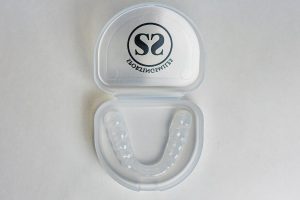
Yes, you can buy a replacement retainer online if you can’t get to a dentist or want to save money on in-office retainer prices. There are various online services like NewSmile or Sporting Smiles that send you an impression kit that you use to make a mold of your teeth at home. Send this off, and soon you’ll receive your clear retainers in the mail.
While this online service works for many people, sometimes it may be best to go to the orthodontist or dentist, especially if you’ve gone a while without wearing a retainer, as they may need to reassess your alignment. The benefit of returning to your orthodontist will include any adjustments necessary to ensure the appliance fits.
If you need new retainers for the first time or because you’ve lost or broken yours, Sporting Smiles makes it easy to purchase clear Essix retainers online.
You just order your impression kit, take your impressions and then professionally trained lab techs custom-make your dental retainers and send them back to you.
With Sporting Smiles, you also have multiple package options:
- Essix Plus, Set of 2: $130
- Essix Plus, Single: $90
- Essix, Set of 2: $110
- Essix, Single: $85
Essix Plus is the most durable option, so consider these if you’re prone to breaking your retainers. Ready to order your custom-made retainers online? Use promo code SMILE10 to get 10% off your order.
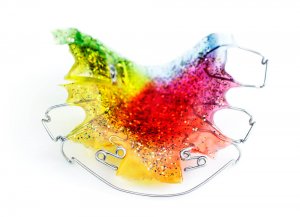
How much is a replacement retainer?
Whether or not you or your child qualify for a free replacement retaining device depends on your insurance and the state you live in. To find out if you or your child can get a replacement retainer for free, call the number on the back of your health insurance card.
With a private dentist, a retainer replacement often costs the same as the original. There might be some savings if you don’t need new dental impressions for your retainer replacements.
Damaged devices can sometimes be fixed. If yours has been damaged or broken, seek advice from your dentist.
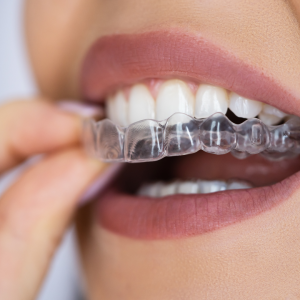
Whether you’re purchasing your first retainer or you need to replace an old one, ALIGNERCO makes it easy to order custom-made retainers online.
You can choose from a wide range of affordable retainer types, with different thicknesses and strengths depending on your needs.
Find out how to save the most on custom retainers now with ALIGNERCO!
Types of retainers
As we’ve mentioned, there are a few different types of teeth retaining devices available. We’ll give you some information about their plus points and downsides and show you what each retaining device looks like, but you should listen to your dentist’s advice about what’s best for your teeth.
Each type has its pros and cons — permanent retainers may make it harder to keep gums healthy, while removable retainers are easier to lose, and you have to remember to put them in every night.
Hawley Retainer
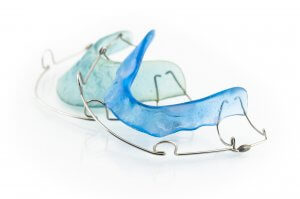
Hawley retainers, also called wire or metal retainers, can be used on both your upper and lower teeth. They are fully removable retainers, and you should take them out for eating and drinking any type of food and beverages. You should wear retainers for a prescribed amount of time set by the orthodontist and remove them for oral hygiene.
This retainer is easy to repair and can be adjusted if needed. Orthodontists commonly recommend this retainer for its cost-effectiveness and effective treatment.
The plate (the part that touches your gums and palette) is made from acrylic plastic, and there are wires that sit over and across your teeth. Some dentists might offer to customize the retainer color or add a pattern.
This is one of the cheapest options available, and they can last for many years if cared for properly. One obvious downside of Hawley retainers is that they are very noticeable, especially if used on the upper teeth. Once you transition to only wearing them at night, though, this isn’t such an issue.
You may also hear a Hawley device called a ‘wrap-around retainer’, but it’s different from some braces treatments that need a headpiece. As mentioned earlier, spring retainers can be added to offer minor teeth straightening.
Essix Retainer
If you want a clear retaining device that is removable, then an Essix retainer could be suitable. This is formed to completely cover your teeth and sit above your gum line. It costs more than a Hawley retainer.
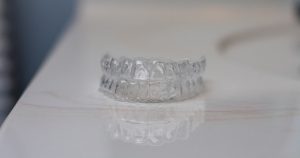
Some people prefer this type because they are less noticeable than wire retainers. Although the plastic is thin, it may still affect your speech slightly until you get used to it.
It is not suitable for all types of orthodontic completed treatment. For example, an Essix retainer is not typically advised for patients who received palate expansion treatment. It can be recommended if the patient suffers from bruxism (teeth grinding) or requires a mouth guard.
You’ll need to remove your device for eating and clean it regularly. It might become discolored over time, but you can prevent this with a proper cleaning routine – more on this later. If your Essix retainer gets broken, it can’t be repaired and must be replaced. To find out more about this option, read our full Essix retainer article here.
Vivera Retainer
This is the clear, plastic retainer for teeth from the manufacturers of Invisalign. It is made from a super strong material, so it’s less likely to break than other plastic devices.
To get one fitted, a laser scan is taken of your mouth, so if you don’t like the feeling of teeth impressions being taken, this could be a great option. You don’t have to have had Invisalign to get a Vivera retainer.
Permanent Retainer
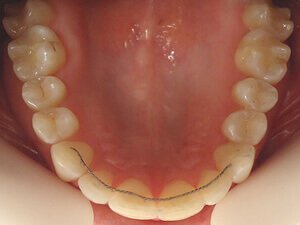
A completely different option is a permanent bonded retainer. Also called lingual or fixed, this type is only used on the front six teeth, often just as a bottom retainer on the lower jaw.
A strong wire is attached behind the teeth, permanently retaining the shape you achieved with braces. You may find yourself replacing yours every 3-10 years.
Permanent dental retainers cost a little more than basic removable retainers, but the fact that they are completely hidden is a plus for many people.
While there’s no chance of losing this type of device, having the wire fixed to your teeth does make it difficult to clean and floss properly.
In the video below, an orthodontist explains the pros and cons of a permanent retainer after braces.
Braces vs. retainers: What’s the difference?
Braces can move misaligned teeth into a better position to improve dental health. They can be fixed onto your teeth with brackets, or you can use removable aligner braces like Invisalign. Treatment with braces can last anywhere between six months and three years, depending on the amount of movement required.
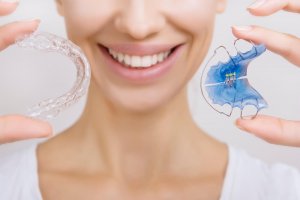
Retaining devices are worn after braces and are usually intended to keep your teeth straight rather than shifting teeth. The retention phase is a part of orthodontic treatment. Post-orthodontic care also
includes an annual retainer check as well.
There are many different types: permanent or removable, plastic or metal, but they all have the same goal: to stop your teeth from becoming crooked again.
While they may look similar, retainers, mouth guards, and night guards are all used for different reasons. Retainers are what help keep your teeth in position after orthodontic care, while mouthguards are designed to keep the teeth safe from injury. Mouthguards are made of flexible plastic that protects the jaw and teeth during physical activity and sports.
Alternatively, night guards are more firm than a mouthguard and are made for patients that clench or grind their teeth at night. Nightguards protect the teeth and jaw from pain and damage caused by the grinding.
Dr. Ashley Niles, Niles Family Dentistry
Can retainers straighten teeth?
Some mouth retainers can straighten crooked teeth if only mild correction is needed. For example, if you have previously worn braces and your teeth have started moving again. Your dentist or orthodontist will be able to advise you if this is an option for you, although using a retainer for teeth straightening isn’t typical.
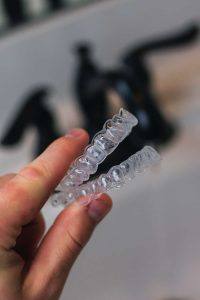
Spring retainers, or spring aligners, can help with simple movements of the teeth. They look similar to a normal Hawley retainer for teeth, but they have extra parts that move one or more teeth slightly or help to prevent the teeth from overcrowding or twisting.
How long do you have to wear a retainer after braces?
Your teeth will slowly move throughout your life, especially if you had your braces before your wisdom teeth grew in. It’s quite common for people to notice their teeth have moved after braces, years after receiving orthodontic treatment. To make sure your teeth stay straight, you should be prepared to wear an orthodontic retaining device for the rest of your life.
If you have a removable retainer, you’ll probably be asked to wear it continuously initially, anywhere from 1 month to 6 months, except while eating, of course! After that, you can normally start to wear your device only overnight. Your dentist will instruct you on how long to wear your teeth retainer each day according to your treatment.
By its very nature, a permanent teeth retainer stays in place the whole time. You don’t have to remember anything except your normal cleaning routine – a plus if you are worried you might forget to put your device in each day or night. Read about not wearing a retainer for a month and what happens.
How to clean your retainer
Cleaning your device is just as important as cleaning your teeth. Otherwise, food debris can get stuck and encourage plaque and bacteria to build up, increasing the risk of tooth decay and gum disease and creating bad odors. Clear retainers will also become discolored if you don’t clean them properly.
Removable and permanent retainers need different types of care, possibly including the use of a special cleaner. Your dentist will show you the best ways to clean, but here are some guidelines.
Removable retainers
You can follow these simple steps for the best way to clean plastic retainers as well as metal ones:
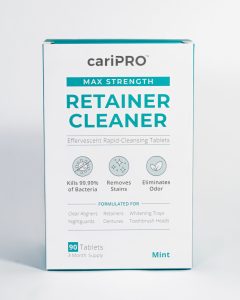
- Rinse your device with warm water after removal and before putting it back in.
- Clean it twice a day with dish soap or castile soap. You can use a soft-bristled brush to gently scrub Hawley retainers, but using a brush on Essix and Vivera retainers isn’t recommended.
- Some dentists recommend soaking your device in a retainer cleaning product like CariPro retainer cleaner. Follow your dentist’s advice and the instructions on the product packaging of the cleaner.
- To clean clear retainers that have turned yellow, gently scrub using baking soda, water, and a soft toothbrush.
- Never use whitening toothpaste on your Vivera, Hawley, or Essix retainer! It can be too rough and abrasive, so stick to soap and water.
You can learn more about CariPRO retainer cleaner and how to clean retainers by reading our full retainer cleaning guide. We also have a guide on how to clean aligners.
How to clean permanent retainers
Bonded retainers can’t be removed for cleaning, so the process is different. It might take a little getting used to, but it will be part of your daily routine in no time.
Dental floss or interdental brushes are vital to maintaining your dental health when you have fixed retainers behind your teeth. If you use floss you will need to use a threader to pass it between your teeth, under the bonded wire.
Dental providers recommend patients invest in a waterpik or water/air flossing device to help with hygiene. Also, diet consideration is typically advisable for bonded retainers (avoid biting into certain foods with bonded teeth, such as corn, apples, and so on).
Interdental brushes may make it easier to get to any plaque build-up; have a try and see what works best for you. Of course, you should still brush your teeth as normal too.
How to fix a cracked retainer
Cracked retainer? Even with excellent care, your retainer, permanent or removable, will probably break at some point. If you’re wondering how to fix a broken retainer at home, unfortunately, you can’t.
In order to ensure safe and effective retaining, you need to go to your orthodontist or dentist to have it fixed (or order a replacement retainer online if you go through an online service).
Conclusion
There are several different types of retainers you can wear after braces, but they all have the same aim: to keep your teeth in position after they have been straightened.
Whether you decide to get a permanent teeth retainer or a removable Hawley or Essix retainer, the important thing is to follow your dentist’s instructions for using it properly. They will tell you how long to wear your device each day and how to clean it properly so it lasts as long as possible.
It’s also possible to get retainer braces that provide mild correction, but if teeth straightening is your main concern, you should probably consider clear aligners instead. For an affordable and convenient at-home option, find out if you’re eligible for clear aligners with a Smile Assessment now.
Teeth Retainer FAQs
Do retainers hurt?
Retaining devices can hurt sometimes, but usually just for a day or two after fitting. The retainer pain should not be really bad, and you can take your usual painkillers to manage this type of pain. If it continues or gets worse, you should go to the orthodontist for the appliance to be adjusted as soon as possible.
Forgetting to put your retainer in for a few days can make wearing a retainer painful. This is because your teeth have already started to move slightly, and you’re forcing them back into place. If parts of the retainer are irritating your tongue, cheeks, or gums, mention it to your dentist.
Can I keep my teeth straight without a retainer?
No. It’s completely normal for your teeth to move over time, and this movement can be unpredictable. To guarantee your time with braces was worth it, you will need to keep wearing your appliance forever.
What’s the best retainer after braces?
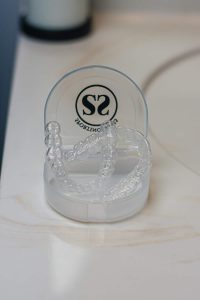
The best retainer depends on your lifestyle and needs. Studies don’t provide evidence that one type of retainer is better than another, but they each have their pros and cons. A bonded retainer may make it more difficult to properly clean teeth and gums, while removable retainers require compliance by patients.
How much do retainers cost?
The retainer cost can be anywhere from $100 to $500, give or take a bit on either end. The cheapest retainers for teeth are usually Hawley retainers, with Essix, Vivera, and lingual retainers costing more. Vivera retainers can cost up to $1,000, but that’s because you have to purchase a set of four.
How long do you wear retainers?
Most orthodontists instruct patients to wear retainers full-time for the first few months after they get their braces off and then let them switch to nighttime wear indefinitely. With fixed retainers, you don’t have to worry about that because you’ll always wear them.
What happens if you don’t wear your retainer?
If you don’t wear your retainer, your teeth will begin to shift back to their original position, also called a relapse. This can begin to happen even if you don’t wear your retainer for a couple of days. That’s why you may notice that it is a bit too snug or uncomfortable.
If your retainer fits without being painful, you can resume wearing it. However, if the retainer doesn’t fit without being painful, you’ll need to visit your orthodontist.
How long do retainers last?
Fixed retainers can last indefinitely, although top bonded retainers generally fail after three years. Bonded bottom teeth retainers can last much longer due to less daily wear and tear. Hawley retainers can last for anywhere from 1 to 20 years, depending on how well you care for yours, and plastic clear retainers can last for a couple of years at most.
Why do my teeth hurt when I wear my retainer?
If your teeth hurt, ask yourself how many days have gone by since the last time you wore it. Retainers hurting teeth is something that happens when teeth begin to shift back to their original position.
If you’re wondering how to make your retainer fit again, there’s no safe or effective way to do that without visiting your dentist or orthodontist for an adjustment or a new retainer altogether.
ResearchGate: What type of orthodontic retainer is best? Consulted 26th April 2023.
NIH: Fixed orthodontic retainers: A review. Consulted 26th April 2023.





